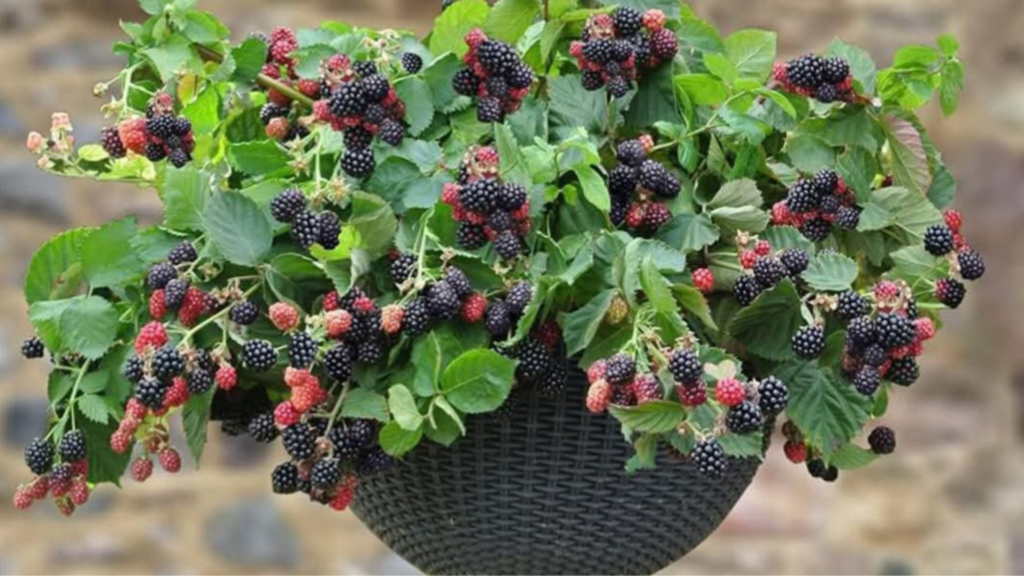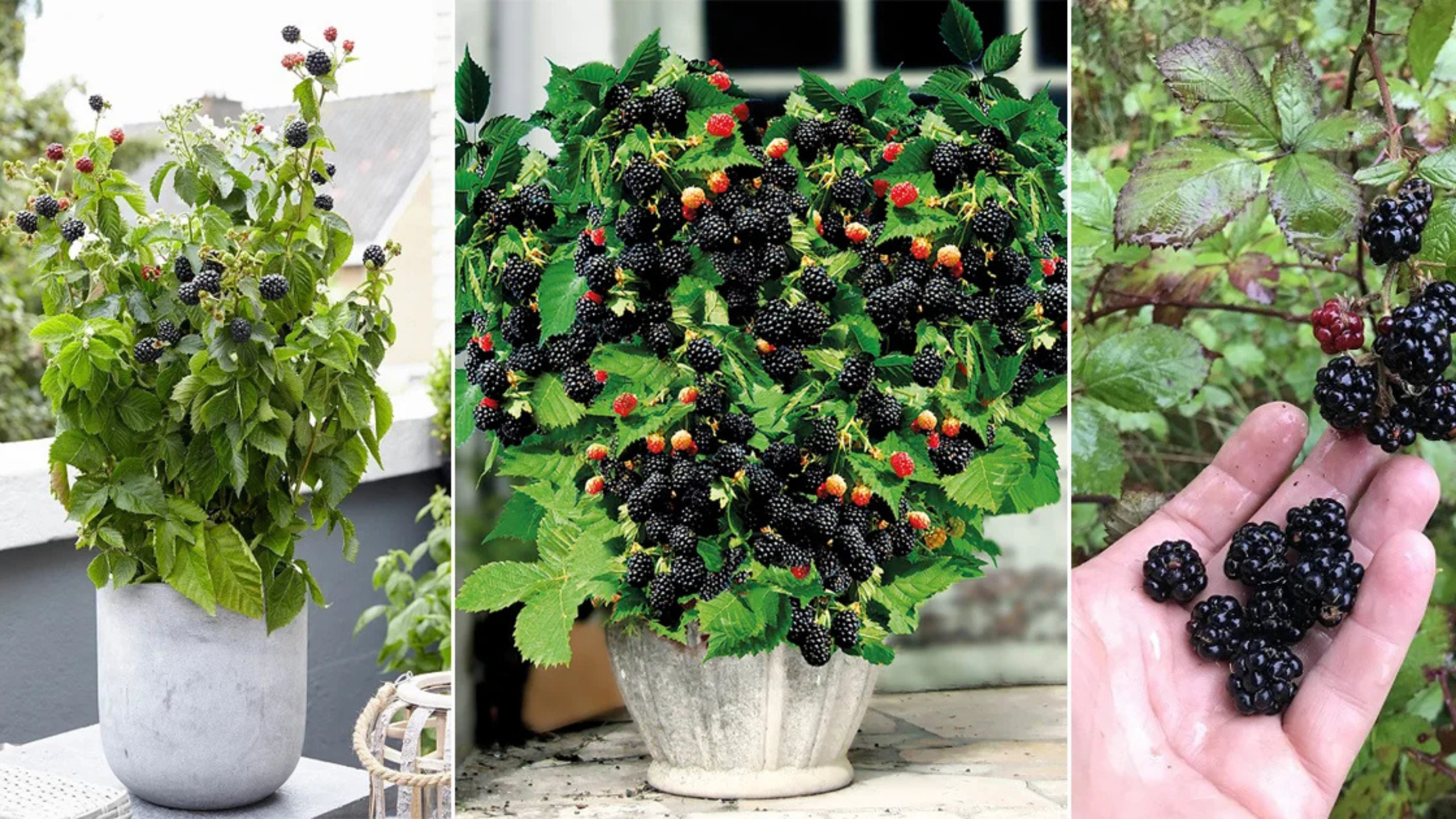Blackberries, known for their sweet and slightly tart flavor, are often linked with sprawling, vigorous growth. However, with the right approach, these delightful fruits can be cultivated effectively in containers. This practice not only accommodates limited space but also allows you to control their growth more easily. Here’s a comprehensive guide to help you thrive in pot-based blackberry cultivation.
Understanding Blackberry Growth
Blackberries grow as shrubs, producing stems known as canes. Their growth cycle can be divided into two primary stages:
- Primocanes: These are the young green shoots that emerge in the first year but don’t typically bear fruit.
- Floricanes: These older canes, aged one year, become woody and are responsible for producing fruit before they die off.
Certain modern cultivars, recognized as everbearing blackberries, can yield fruit during the first year on primocanes, making them easier to maintain and accelerating the harvesting process.
Selecting the Right Blackberry Variety
Choosing the appropriate variety is vital for pot cultivation. Opt for varieties that are well-suited for container gardening:
- Thornless Varieties: Such as ‘Loch Ness’ or ‘Navaho’ for hassle-free care.
- Everbearing Types: Like ‘Reuben,’ which offer quicker fruiting and simplified pruning.
- Compact Varieties: Such as ‘Baby Cakes,’ which are specifically bred for smaller containers.

Preparing the Ideal Soil Mix
Blackberries prefer a slightly acidic soil, with a pH of 5.5 to 6.5, that is well-drained. An effective soil mix might include:
- 50% universal potting soil rich in organic matter.
- 30% compost or well-decomposed manure.
- 20% sand or perlite to enhance drainage.
You can also include a small amount of peat moss or heather soil to slightly acidify the mixture.
Choosing and Preparing the Container
An appropriate pot is crucial for healthy blackberry growth:
- Size: Opt for a container that holds at least 30 to 40 liters to allow for adequate root expansion.
- Material: Use terracotta pots for better aeration or lightweight plastic for easier handling.
- Drainage: Make sure the bottom of the pot has drainage holes and consider adding a layer of clay pebbles to prevent excess moisture.
Plant your blackberry bush ensuring that the crown (the base of the plant) is level with the soil surface. Take care not to plant too deeply to avoid root diseases.
Caring for Potted Blackberries
- Sunlight Requirements: Blackberries require 6 to 8 hours of sunlight daily to produce their sweet fruits. A south or west-facing location is ideal.
- Watering: Maintain consistent moisture, especially during flowering and fruiting stages. Avoid standing water that can lead to root rot. Using organic mulch, like wood chips or straw, can help retain moisture and stabilize temperature.
- Fertilizing: Apply an organic fertilizer rich in potassium (like those formulated for tomatoes or berries) every 4 to 6 weeks during the spring and summer. Limit nitrogen to prevent excessive leaf growth at the expense of fruit production.
- Pruning and Support: For non-everbearing varieties, prune floricanes after fruiting. Alternatively, cut all canes back in autumn for everbearing types to simplify management. Installing a small trellis or stakes can help support the canes and prevent breaking under the weight of the fruit.
Common Issues and Their Solutions
- Overwatering: Yellowing leaves may indicate excess water and but can lead to fungal diseases. To remedy this, reduce watering and improve drainage.
- Insufficient Sunlight: If fruit production declines, relocate the pot to a brighter area.
- Pests: Aphids and spider mites may require treatment with garlic infusion or insecticidal soap.
- Bird Threats: Use bird netting to protect ripe fruit from feathered visitors.
Harvesting and Storing Blackberries
Blackberries are ready for harvest when they are deep black, shiny, and can be easily detached from the plant. Frequent picking is essential, as berries can spoil quickly.
- Short-term Storage: Keep in the refrigerator for 2 to 3 days.
- Freezing: Spread berries out on a tray before transferring to bags for long-term storage.
- Culinary Uses: Turn your bounty into jams, sauces, pies, or dry them for long-lasting snacks.
Why Grow Blackberries in Pots?
Growing blackberries in pots is ideal for those with limited space, like balconies or patios. It allows better control over root expansion while providing clean, easily accessible fruit free from soil diseases.
By following these recommendations, you can enjoy homegrown blackberries that are both delicious and packed


3 thoughts on “How to Successfully Grow Blackberries in Pots at Home”